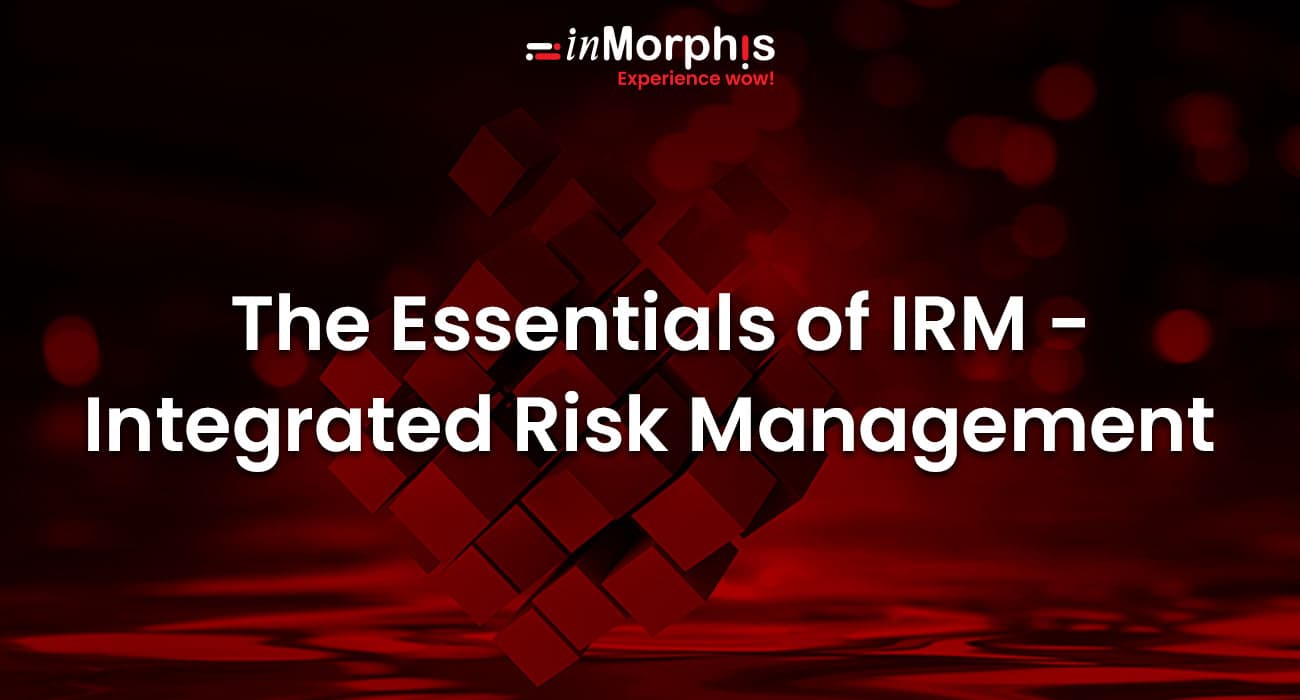Hello and welcome to inMorphis Blogs! I hope this will give you an insight into how to regulate your risk management flow. So, let's dive in. In this blog, will introduce why for managing policies, controls, audits, tasks, and so on.
Let Us Understand the Most Critical Point
An integrated risk management framework is not one thing that fits all. Different consumers have different processes of flow and management. In this case what can be the common ground?
ServiceNow IRM has fundamental features (also known as out-of-the-box) provided in the ServiceNow platform that can be further customised based on the customer's requirements. The advantage of ServiceNow integrated risk management is the regular updates to its features. A new release means new updates, and with that new flow in IRM is added.
What are Every Organisation’s Problems?
In the traditional way of flow, an organisation has been enduring problems as:
- Lack of integrated reporting and transparency of data
- Weeks or months are taken for management approval for the compliance of a regulation
- Manual tracking of data via sheets
- Lack of workflow-driven process
- Too many emails and meetings across business units
- Not clear ownership of the task.
These fundamental and time-consuming problems can be sorted through ServiceNow IRM.

Tackling the Problem
All the above-stated problems can be solved using out-of-the-box features provided by ServiceNow. But that's not all. As we discussed earlier, integrated risk management has different meanings and flows for different organisations.
Flow Provided by ServiceNow
Risks can be created with their respective assessments and controls.
Let’s say there are different areas where its assessments are required i.e., in vendor management. auditing, policies and compliance.
In ServiceNow, there are categories where it can come into place, and their associated corrective actions can be taken. Different tracks/departments (auditing, vendor risk, business continuity) can utilise risk management in the following ways:
Audit Management – Identify controls for recurring or one-time risks and perform scoping and prioritising audit management based on its data.
Vendor Risk Management - Consolidate risks from both vendors' and organisations' sides to have a holistic view.
Continuous Authorization and Monitoring – Automation is essential for achieving certifications like CMMC, bringing systems online faster, and supporting continuous authorisation.
Continued Authorization and Monitoring – Automate the processes that support risk management frameworks, bring systems online faster, and enable ongoing authorization.
All these gatherings of risks and controls are reports for the users. These can be specific or all based on roles or requirements. Hence there is transparency in data.
Read the blog to get complete insights about GRC & its Paybacks with ServiceNow
Essential Elements of IRM
IRM (Integrated Risk Management) is an organisation's comprehensive approach to risk management.
It seeks to give a comprehensive perspective of the organisation's threat exposure and to create a unified management plan that reduces it while maximising possibilities.
Effective IRM necessitates the collaboration of several departments and teams throughout the organisation. This coordination is accomplished by implementing particular critical aspects. Here is a list of some of the key components of IRM.
Risk Identification: The first stage in IRM is identifying potential organisational hazards. This entails detecting risks in all areas of the firm.
Risk Assessment: After identifying them, the next stage is to evaluate their likelihood and potential impact.
Risk Mitigation: Once these threats have been identified and assessed, the next step is to mitigate them. This can include putting controls in place, making contingency plans, or transferring it through insurance.
Risk Monitoring: It entails carefully monitoring the identified risks to ensure they are being handled successfully.
Risk Reporting: Effective IRM requires regular reporting to senior management and the board of directors. Reporting should include updates on the status of identified risks, any changes in their landscape, and the effectiveness of its management activities.
Risk Governance: IRM necessitates a strong governance framework to ensure that management activities are appropriately incorporated into the organisation's operations.
Finally, an effective IRM requires a mindset of constant improvement. This entails regularly assessing and refining its management strategy and processes to ensure that they are still relevant and successful in controlling the organisation's risk exposure.
Read More: Skills Required for ServiceNow Developer
The Big Question: What do You Want?
ServiceNow understands the statement 'No size fits all' too clearly. You can modify the IRM system that ServiceNow provides as a consumer. For this, what will you need?
First and foremost, a long-term plan is how you want your flow to work. What are the features you require in your risk management? What are the departments do you want to consider for managing them?
Then comes the team you will need to understand and execute your plan. Gather the people in the team who are skilled in ServiceNow IRM platforms. They can better guide you to the features and limitations of the new requirements.
Always Remember!
Managing the flow of real-time data and the continuity of flow is paramount in an organisation. Every action has a side effect or potential side effect. Identifying this and sorting it is essential.
This can be done when all the ingredients needed to solve the threats are in one place, ownership of the tasks is clear, and there is transparency in data. IRM is here to help improve the workflow as much as possible.
Conclusion
However, inMorphis + ServiceNow IRM provides out-of-the-box solutions that can be customized to meet the specific needs of each organization. By integrating reporting and transparency, automating workflows, and consolidating them, ServiceNow IRM offers a comprehensive solution to address common challenges in risk management.
To leverage the full benefits of ServiceNow IRM, organizations must have a long-term plan, assemble a skilled team, and continually update and modify their risk management systems. IRM is essential to minimize potential risks, optimize workflow, and ensure the continuity of operations.
learn more about ServiceNow IRM and its benefits.


